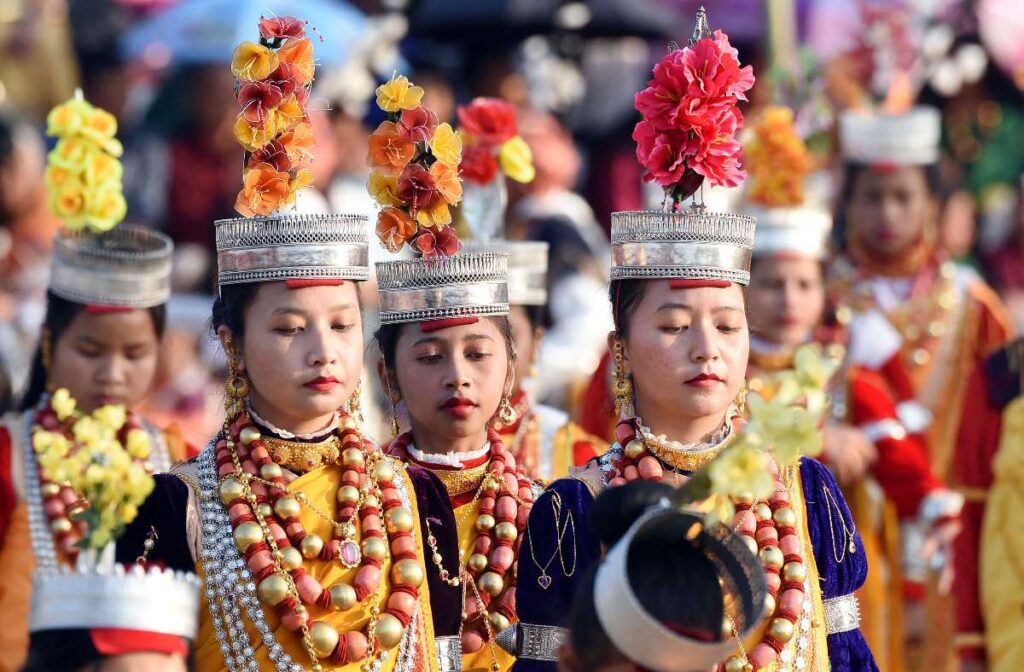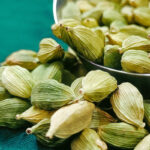Meghalaya, one of the most captivating states in northeastern India, is known for its breathtaking beauty and rich cultural heritage. The name “Meghalaya” translates to “the abode of the clouds,” reflecting the mystical allure of the region. According to local legends, there were once 16 families—nine from the heavens and seven from the earth—who shaped the region’s history. Meghalaya is home to three main tribes: the Jaintia, Khasi, and Garo, each of which brings its own cultural richness and traditions. A significant aspect of their culture is the traditional dress of Meghalaya, which vividly reflects their identity and lifestyle.
Weaving has long been a primary source of income for the people of Meghalaya, especially among the Garo tribe, renowned for their talented weavers. The traditional clothing of these tribes not only shows their unique way of life but also serves as a means of preserving their customs. Even today, the people of Meghalaya proudly embrace their roots through their attire. This article will explore the traditional dress of Meghalaya for both men and women.
Traditional Dress of Meghalaya for Men

The traditional attire for men in Meghalaya varies depending on the tribe. The Jaintia and Khasi men wear similar outfits, typically a long, unstitched dhoti wrapped around the waist, accompanied by a jacket or shirt. During special occasions like the Ka Pom-Blang Nongkrem and Ka Shad Suk Mynsie festivals, men adorn themselves with a silk turban and often carry a sword as part of the ceremony.
On the other hand, the men of the Garo tribe are known for wearing handwoven loincloths. Though these traditional male garments are mainly reserved for festivals and cultural events, they remain a proud symbol of the region’s heritage.
Traditional Dress of Meghalaya for Women

Meghalayan women have a rich variety of traditional clothing that reflects both their history and cultural values.
- Jainsem: This is one of the most iconic traditional dresses for women in Meghalaya. Made from mulberry silk, a local specialty, the Jainsem is often worn with a tap-moh khlieh, a cotton shawl. It is an elegant attire that signifies both grace and simplicity.
- Kyrshah: Among the Jaintia women, the Kyrshah is a checkered cloth worn on the head during harvest season. This is paired with a velvety blouse and a long sarong called Thoh Khyrwang. To enhance their appearance, women often wear gold or silver ornaments during festivals. One common ornament is the Kynjri Ksiar, a gold pendant popular among both Jaintia and Khasi women.
- Jainkup: Elderly women from the Jaintia tribe often wear the Jainkup, a long-sleeved woolen blouse. This garment is adorned with intricate lacework around the neckline. Women complete their look with accessories such as coral beads, foil-covered necklaces, and gold or silver earrings. The Jainkup is frequently worn during traditional dance performances, particularly during the Khasi Festival.
- Dak Manda: Women of the Garo tribe traditionally wear the Dak Manda, a handmade lungi wrapped around the waist. However, the specific attire worn by the Garo community varies depending on where they live. For instance, women in more densely populated areas tend to wear long cotton dresses, while those in remote regions may prefer a smaller piece of cloth called “eking.” This cloth is tied around the waist and measures about 18 inches in length and 14 inches in width. The Garo women also wear unique ornaments like Nadongbi nr sisha (brass earrings) and Ripok (necklaces made from red, silver, brass, or cornelian beads) during festive occasions.
Traditional Wedding Dress of Meghalaya for Men and Women
In traditional Meghalayan weddings, the bride typically wears a Jainsem or Dhara, often made from mulberry silk in shades of saffron or yellow. The bride’s attire is paired with a silver or gold crown adorned with intricate designs. She also drapes two contrasting fabrics over her shoulders to enhance the elegance of her outfit.
The groom wears a Jymphong, a sleeveless jacket with a deep V-neckline and floral motifs. The jacket is typically tied with a Chinese frog fastener and decorated with golden or silver tassels. A silk dhoti with golden threadwork completes the groom’s wedding attire. During weddings, men also wear a Jainspong, a turban in red and yellow hues, adding to the overall festive look.
Conclusion
Despite the diversity in the traditional dress of Meghalaya, each tribe—be it Jaintia, Khasi, or Garo—shows its rich cultural identity through its attire. The people of Meghalaya take great pride in preserving their customs, and their clothing is a beautiful reflection of this heritage. Although modern times have seen some changes in men’s attire, which is now mostly worn on special occasions, women continue to embrace their traditional outfits. These colorful and intricate garments, along with the symbolic ornaments, showcase the beauty and significance of Meghalaya’s cultural legacy.


